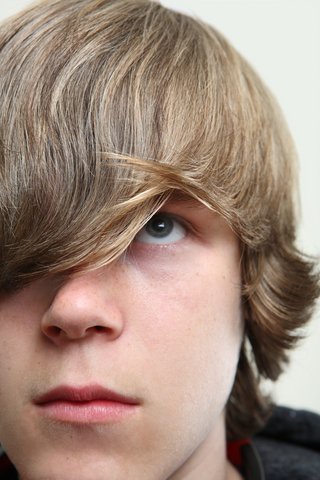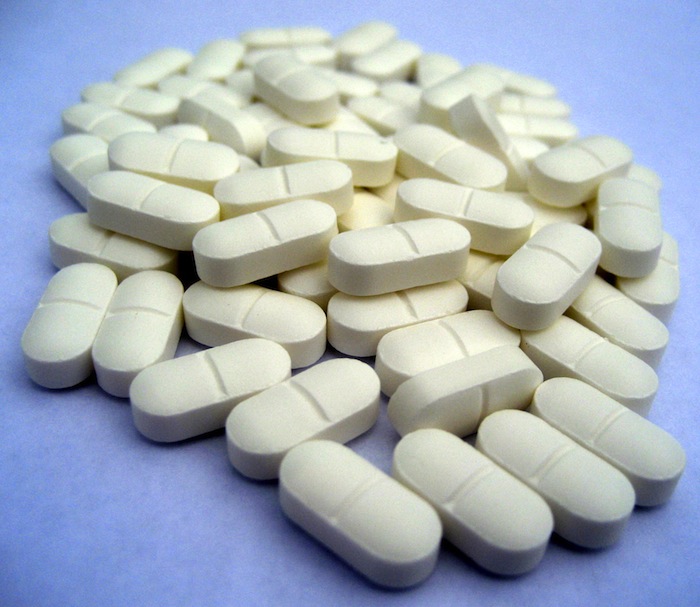The Monitoring the Future survey helps experts understand how many teens are taking drugs, what sorts of drugs they are taking and where they are obtaining those drugs.
Teen Vicodin Addiction
In 2011, there was both good news and bad news in the survey, when it comes to teen Vicodin addiction. The good news is that the rate of use among 8th and 10th graders seems to be dropping each year. The bad news is that more teens than ever before are obtaining Vicodin and other drugs from their family members.
In fact, in 2007, 50.5 percent of users got their drugs for free from a friend or relative. In 2011, 70.2 percent of users got their drugs in this manner. While the survey doesn’t fully explain the cause of this increase, it’s possible to find an answer from a quick search of news reports. For example, a blog entry from a reputable chiropractor discusses a patient who was given a prescription for Vicodin to help her recover from the common cold. In the past, this would have been unthinkable. Now, it seems that even doctors find Vicodin so harmless that they prescribe it routinely, for all sorts of conditions.
If people can obtain Vicodin this easily, they might believe that it’s safe and harmless, and they might consider sharing the drug with their teens. As parents of teen addicts know, addictions to Vicodin can quickly develop, even through this seemingly harmless form of sharing.
Basic Facts and Risks
Vicodin was originally developed to help doctors treat severe cases of pain. The drug contains a narcotic and an anti-inflammatory medication that work together to dull the senses and make pain dissipate. When given at the proper dose, Vicodin can provide significant relief. When taken at high doses, Vicodin can cause addiction.
The narcotic contained in Vicodin is closely related to heroin, and according to the National Institute on Drug Abuse, drugs like this are some of the most addictive substances known to man. When a user takes in Vicodin, the body converts the drug into morphine, which the body seems to regard as a natural form of a neurotransmitter. When the body senses morphine, it activates a so-called reward system. A series of chemical reactions take place, and the user feels a burst of euphoria and pleasurable sensations. This burst doesn’t last for more than a few moments, but it can be incredibly addictive.

Once the euphoria lifts, the person may feel:
- Confused
- Drowsy
- Relaxed
- Sedated
The first time a user takes Vicodin, these responses may be huge and exaggerated. Over time, however, the body begins to adjust to the drug and the user must take higher and higher doses of Vicodin to feel the same effect. These high doses carry a large risk of overdose. When a user takes in high doses of Vicodin, breathing may slow down to a crawl, and the user’s reflexes may be dulled. According to an article published by the U.S. National Library of Medicine, people can die due to this slow breathing. In fact, some people may stop breathing altogether when they take high doses of Vicodin. They become so sedated and relaxed that their basic bodily functions simply shut down.
As mentioned, Vicodin contains more than just a narcotic. It also contains an anti-inflammatory medication. This ingredient must be cleared from the bloodstream by the liver, and often, the liver must work overtime to clear even a basic dose of Vicodin. According to an article published by San Diego Miramar College, people with severe forms of Vicodin addiction can take up to 100 pills per day, and in so doing, they put an extreme amount of pressure on their livers. Some of the cells in the liver can die, and sometimes, those changes are not reversible. Liver failure is a serious risk of Vicodin addiction.
Defining Addiction
According to the Mayo Clinic, people who are addicted to drugs tend to exhibit some, or all, of these symptoms:
- A persistent desire to take the drug
- An inability to stop using the drug
- Feeling the need to use the drug in order to help resolve problems
- Spending large sums of money, and a significant amount of time, in order to purchase the drug
- Keeping a constant supply of the drug on hand
Teens struggling with Vicodin addiction often don’t want to live their lives in this manner. In fact, it’s likely that many of them would prefer to live a life full of friends, fun and meaningful activities, as opposed to a life of addiction that is full of fear, anxiety and guilt. However, teens who are addicted to Vicodin often can’t simply change their behavior on their own. The addiction has caused chemical changes in the brain that make it hard for the teen to stop.

As a teen nourishes the addiction, taking larger and larger doses of Vicodin, the brain learns to adjust to living in a sea of morphine. If that drug is removed, the brain must take several days or even weeks to adjust to the absence of Vicodin, and the teen can feel a variety of symptoms during this transition. Teens who try to stop taking Vicodin without help may experience such crushing symptoms that they run back to their addictions to make the pain stop. In fact, they may believe that they’re unable to function without Vicodin. This chemical process lies at the heart of a Vicodin addiction.
Who Is at Risk?
Any teen who takes Vicodin on a recreational basis is at risk for addiction. There are some people, however, who might be more prone to addictions of all sorts, including Vicodin addiction. For example, a study published in the Journal of Adolescent Health found these risk factors tended to increase the risk of prescription painkiller abuse:
- Poverty
- Positive feelings about drugs and drug use
- Detached parents
- Friends who use drugs
Another study published in the American Journal of Health Behavior found that teens who tended to take large risks, or who had poor levels of self-control, might be at higher risk for drug and alcohol abuse. These teens might be more likely to feel that they are invincible, perhaps, or they might simply enjoy the idea of taking a gamble and engaging in an activity that is considered taboo.
Spotting an Addiction
Since so many adults are being prescribed Vicodin on a regular basis, it’s likely that many people have Vicodin prescriptions in the medicine cabinet of the family bathroom. Counting those pills regularly can help parents spot an addiction in the teen, as pills that seem to go missing or prescriptions that seem to get refilled on their own may be targets of abuse from addicted teens.
In addition, the Mayo Clinic suggests that teens who abuse drugs tend to exhibit the following symptoms:
- Obsessive need for privacy. The teen may resent having parents enter the room, ask questions or find out about friends. All of these actions could lead to the discovery of the addiction, and the teen is likely desperate to keep that addiction a secret.
- New friends. Teens who abuse drugs often spend time with others who use drugs. A rapid turnover of friends could indicate this shift.
- Slovenly appearance. As the teen spends more time on drugs, he or she spends less time on grooming. The teen may seem unwashed or unkempt.
- Sudden need for money. While it’s true that many teens can get Vicodin for free, by the end of the addiction process, they may need extremely large amounts of the drug and they may need to buy it. This could cause the teen to constantly ask for money, or to steal money.
Teens taking Vicodin might also seem sleepy and sedated much of the time. In fact, this is one of the hallmarks of Vicodin addiction, and it’s a relatively easy symptom to spot. While most teens like their sleep and are known for sleeping more than the average adult, a teen with a Vicodin addiction may have trouble staying awake to complete a sentence.
What to Do

Discovering a Vicodin addiction in a teen is always troubling, and it can lead parents into a cycle of despair and blaming. While this might be natural, it isn’t inevitable. When the addiction has been discovered, real healing can begin. There are many therapies available that can help a teen recover from the physical, emotional and chemical aspects of Vicodin addiction and learn to develop strong defenses against future addictions. In short, by discovering the problem, parents can help the teen recover. It’s a moment that could turn the teen’s life around.
As Newport Academy, we specialize in helping teen addicts begin the process of recovery. We use clinically proven techniques to combat addiction, and our holistic method helps keep teen addicts comfortable and engaged in therapy.






